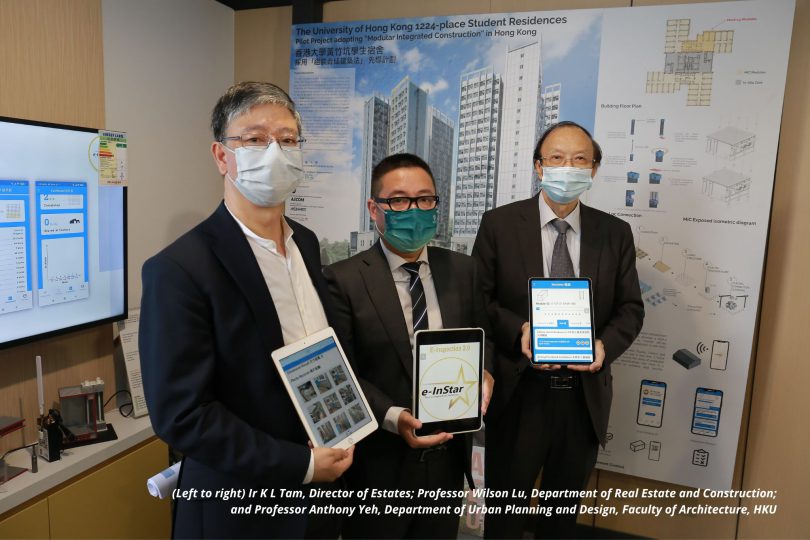A research team at the Faculty of Architecture of the University of Hong Kong (HKU) has developed an e-inspection 2.0 system with a corresponding mobile application (app) e-inStar to monitor the manufacturing and delivery of student residence modules constructed in the Mainland during the COVID-19 pandemic, when deployment of inspection staff across the border became difficult under social distancing and border control measures.
The current e-inspection 1.0 system used by the industry has made paperwork easier to manage through digital means, such as uploading of inspection photos and documents for filing and records. However, on-site inspections remain necessary.
After the upgrade, the new e-inspection 2.0 system has demonstrated to be an effective and reliable tool for real-time offshore monitoring and inspection of building works, through the adoption of digital technologies that include blockchain, building information modelling (BIM), internet of things (IoTs) and geographical information system (GIS).
IoTs are utilised to collect temperature, humidity, vibration and location information; GIS supports real-time proof of location, while BIM is used for better information management and presentation. Moreover, the e-inStar app, developed in-house, encodes the standardised inspection processes of the Modular Integrated Construction (MiC) and enables inspection works to be performed in an offshore factory. The core of the system is the blockchain technology, which can ensure the accountability, immutability and traceability of all the inspection information collected from the app, IoTs and GIS.
The e-inspection 2.0 system and the app enable monitoring of all details of the module manufacturing process and the entire transportation process after the modules leave the factory. Each module will have its own ‘birth certificate’ that clearly records the details of each testing process and the persons in charge.
The HKU Wong Chuk Hang Student Residence is a pilot project built with the MiC method, which can substantially shorten construction time; tackle manpower shortage in the territory; and reduce undesirable environmental impacts brought about by construction works. The project comprises two 17-floor tower buildings on top of a three-storey podium structure built with approximately 1,000 modular units, which will be manufactured offsite in a factory located in Guangdong Province. After inspection, qualified modular units will be transported to Hong Kong using containers via ships and trucks for on-site assembly. The new student residence will provide 1,224 student hall places and is scheduled to be completed by mid-2023. — Construction+ Online
Source: The University of Hong Kong Press Releases

 Malaysia
Malaysia Singapore
Singapore Indonesia
Indonesia Tiếng Việt
Tiếng Việt ประเทศไทย
ประเทศไทย










